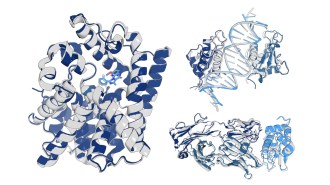Oxygen shapes growth of graphene
Number of atoms on copper surface changes size and rate of material's crystal development

Copper (orange) exposed to oxygen for 30 minutes sprouted centimeter-sized graphene crystals (pale).
Hao et al. Science 2013






